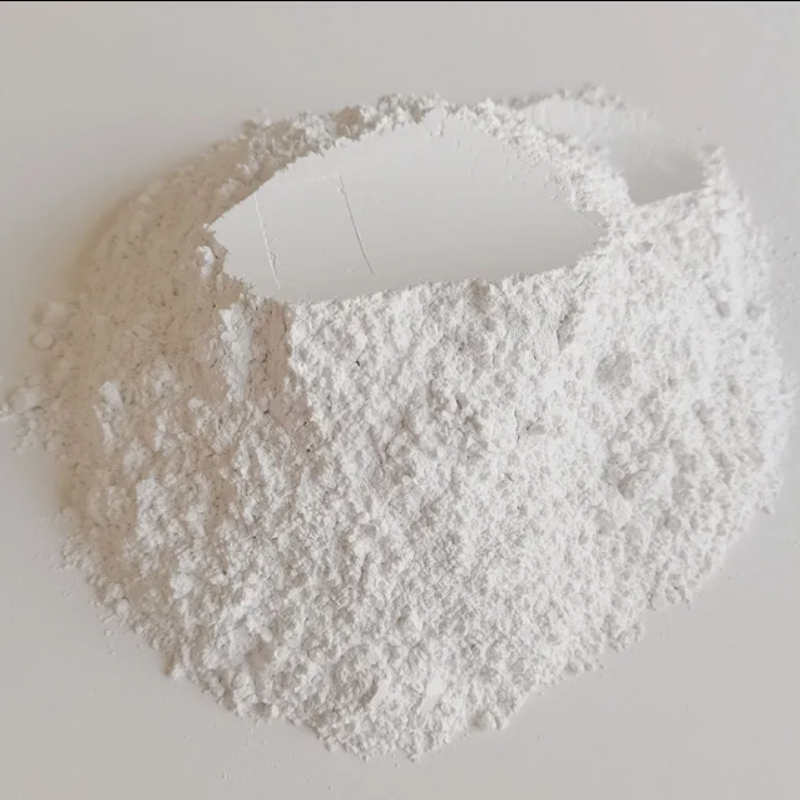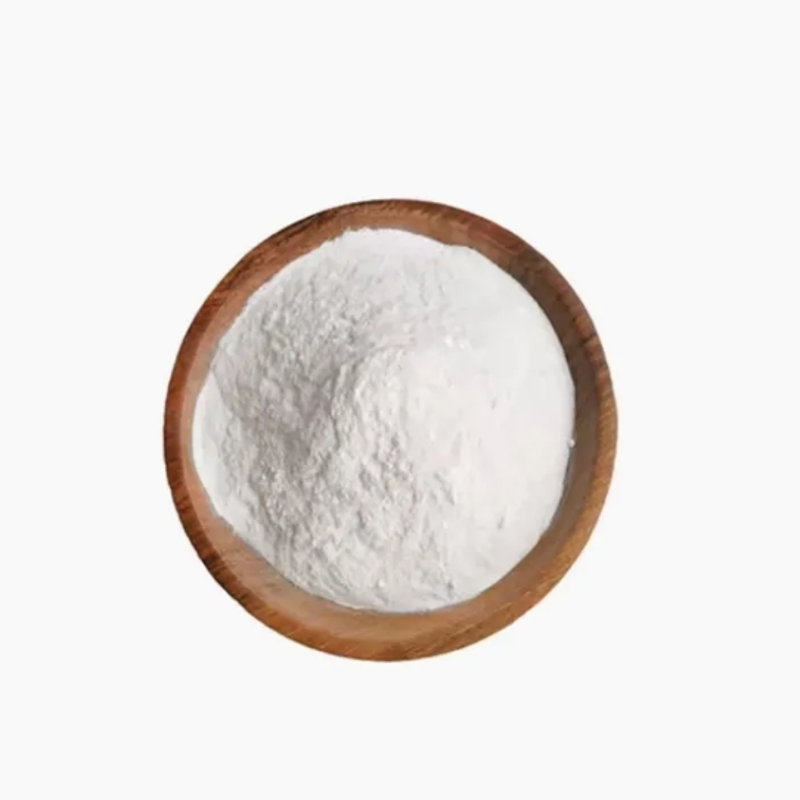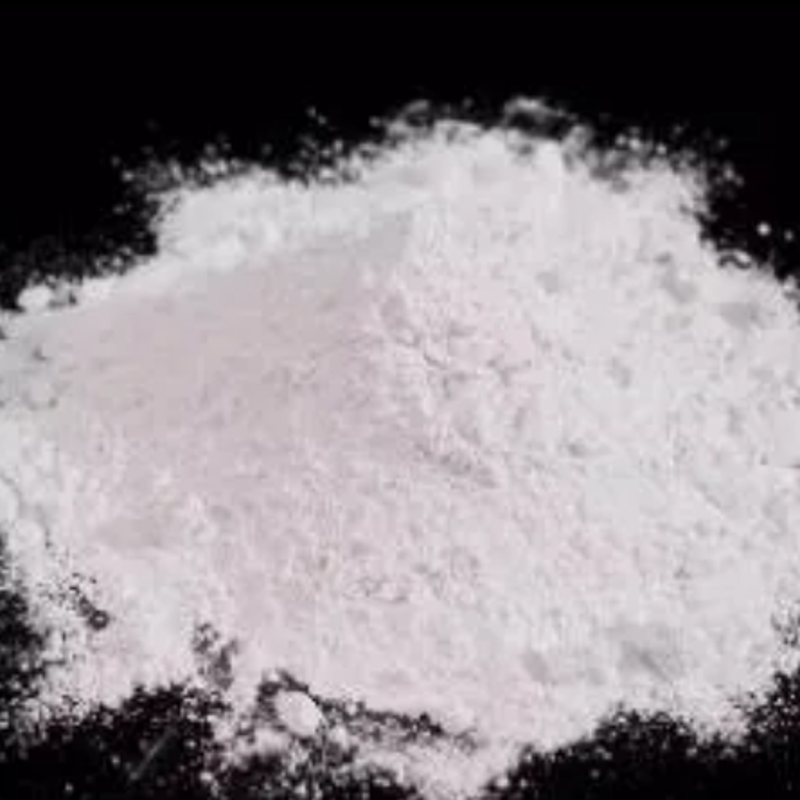-
Categories
-
Pharmaceutical Intermediates
-
Active Pharmaceutical Ingredients
-
Food Additives
- Industrial Coatings
- Agrochemicals
- Dyes and Pigments
- Surfactant
- Flavors and Fragrances
- Chemical Reagents
- Catalyst and Auxiliary
- Natural Products
- Inorganic Chemistry
-
Organic Chemistry
-
Biochemical Engineering
- Analytical Chemistry
-
Cosmetic Ingredient
- Water Treatment Chemical
-
Pharmaceutical Intermediates
Promotion
ECHEMI Mall
Wholesale
Weekly Price
Exhibition
News
-
Trade Service
Abstract: The effects of curing conditions, epoxy equivalent, fillers and other factors on the properties of acrylic powder coatings and coatings were analyzed by using the self-made epoxy acrylic resin and curing agent dodecanedicarboxylic acid as the film-forming main body
.
The results show that the self-made epoxy acrylic resin powder coating has good insulating properties.
When the molar ratio of curing agent and resin active groups is 1:1, the volume resistivity of the paint film is the highest, reaching 5.
09×1013Ω·m
Toluene: analytical grade, Tianjin Fuyu Fine Chemical Co.
, Ltd.
;
Dodecanediacid DDDA: industrial grade, Liyang Kaixin Chemical Raw Materials Management Department;
Leveling agent LP88, brightening agent LP701, benzoin: industrial grade, Wuhan Yincai Technology Co.
, Ltd.
;
Potassium hexatitanate whiskers: Industrial grade, Geneng Chemical Materials Co.
,
Ltd.
1.
2 Main instruments and equipment
NICOLET-460 Fourier Transform Infrared Spectrometer, Nicole Instruments, USA;
Q600SDT thermogravimetric analyzer, American TA company;
S-3700N scanning electron microscope, Hitachi, Japan;
Waters 1515 GPC gel permeation chromatograph, Waters, USA;
LK200 high-speed universal pulverizer, small electrostatic spraying equipment, Wuhan Yincai Technology Co.
, Ltd.
SFJ-29N twin-screw extruder, Yantai Yuanli Machinery Manufacturing Co.
, Ltd.
;
DHG-9070 electric heating constant temperature blast drying oven, Shanghai Thorpe Instrument Co.
,
Ltd.
1.
3 Preparation of epoxy acrylic resin
1.
4 Preparation and spraying of epoxy acrylic powder coatings
Mix the resin, curing agent, leveling agent, benzoin and other components according to a certain proportion, extrude the mixed material with a twin-screw extruder at 100 ° C and press into tablets, crush and sieve (180 mesh) to obtain Acrylic resin powder coating
.
The plate was sprayed with an electrostatic spraying device, and then placed in an oven at 160 °C for 30 min to cure to obtain a cured sample
.
Table 2 is the basic formula of acrylic resin powder coating, wherein in the synthetic monomer of acrylic resin, GMA content is 30%
.
1.
5 Analytical testing and characterization
FTIR: Tested by NICOLET-460 Fourier Transform Infrared Spectrometer, the range is 600~4000cm-1; TG: Tested under N2 atmosphere, the heating rate is 10℃/min;
GPC: Tested by Waters1515GPC gel permeation chromatograph, solvent is THF; epoxy equivalent: test method is hydrochloric acid acetone method;
Bending strength: test according to GB/T 6739-2006; impact resistance: test according to GB/T1732-1993; volume resistivity: test according to GB/T 1410-2006, test voltage is 500V;
Breakdown voltage: test according to GB/T 6554-2003; gel time: test according to GB/T 16995-1997
.
2.
Results and discussion
2.
1 Properties and characterization of epoxy acrylic resin
The performance indexes of the self-made epoxy acrylic resin are shown in Table 3
.
Epoxy acrylic resin mainly relies on the reaction between epoxy groups and carboxyl groups in the curing agent for cross-linking and curing
.
Figure 1 is an infrared spectrum of the resin
.
As can be seen from Figure 1, 2994cm-1 and 2953cm-1 are the asymmetric vibrational absorption peaks of carbon-hydrogen bonds of methyl and methylene groups, 1723cm-1 is the ester group absorption peak in acrylate, and 1154cm-1 is the absorption peak of ester group.
The COC stretching vibration absorption peak in the ester group is the characteristic peak of butyl ester at 991cm-1, the absorption peak of epoxy group at 910cm-1, and the characteristic peak of monosubstituted benzene ring at 760cm-1 and 699cm-1
.
From this, it can be judged that the characteristics of several monomers are reflected in the infrared spectrum of the resin
.
The resin contains epoxy reactive groups, which provide a basis for the subsequent preparation of powder coatings
.
2.
2 Curing process of epoxy acrylic resin powder coating and selection of curing agent dosage
The most commonly used curing agent for epoxy powder coatings is polycarboxylic acid curing agent, mainly carboxyl polyester resin, polybasic fatty acid,
etc.
Acrylic powder coatings are commonly cured with dibasic acids, mainly sebacic acid, dodecanedioic acid, etc.
In this experiment, dodecanedioic acid was selected as the curing agent
.
The curing mechanism of epoxy acrylic resin powder coating is shown in Figure 2.
During the curing process, the epoxy group and the dicarboxylic acid undergo a ring-opening reaction to form a network cross-linked structure
.
Figure 3 is the infrared spectrum of the epoxy acrylic resin and the cured paint film.
Since the content of phenyl in the system before and after the reaction remains unchanged, the peak height of the phenyl peak at 750 cm-1 is used as a reference for normalization
.
It can be seen from Figure 3 that the characteristic peak of epoxy group at 910cm-1 in the infrared spectrum of the cured paint film disappears, which proves that the epoxy group has reacted
.
The amount of curing agent has a great influence on the performance of powder coatings, and the determination of curing agent content is mainly based on the content of active groups in the system
.
Table 4 shows the performance indicators of powder coatings and paint films under different curing agent contents
.
It can be seen from Table 4 that when the molar ratio of the active group of the curing agent to the epoxy resin is 0.
6 to 1.
4, the coating films have good leveling and flexibility
.
The impact resistance of the paint film increases with the increase of the curing agent content
.
When the curing agent content is low, the impact resistance of the paint film is poor due to insufficient curing.
When the curing agent content is high, the excessive amount of curing agent will increase the branch chain density inside the paint film, thus improving the paint film.
impact resistance, but with the increase of curing agent content, the hardness of the paint film decreased
.
The gelation time of powder coatings decreases with the increase of curing agent content, mainly because with the increase of curing agent content, the density of crosslinkable groups in the system increases, the reaction rate increases, and the gelation time decreases
.
The insulating properties of the paint film are all good
.
Figure 4 is the TG curve of the cured paint film under different curing agent contents.
It can be seen from the thermogravimetric analysis that the initial thermal decomposition temperature of the paint film is 301-319 °C, and the temperature corresponding to the maximum weight loss rate is above 390 °C
.
When the molar ratio of active groups of curing agent and resin is 1:1, the temperature at which the paint film loses 5% of its weight is 319 ℃; with the increase of curing agent content, the thermal decomposition temperature of the paint film increases first and then decreases
.
To sum up, when the ratio of active groups of curing agent to resin is 1:1, the performance of the paint film is the best
.
Therefore, the active group ratio of curing agent and resin was selected as 1:1 in subsequent experiments
.
2.
3 Influence of different epoxy equivalent acrylic resins on the properties of powder coatings
The epoxy group content in the resin has a great influence on the performance of the paint film, and directly affects the crosslinking density of the paint film
.
The epoxy group content of the resin is mainly determined by the proportion of GMA in the monomer.
In order to further study the change of coating properties under different epoxy group conditions, three acrylic resins with different GMA contents were designed and synthesized
.
Table 5 shows the properties of acrylic powder coatings under the condition of acrylic resin with different GMA content
.
It can be seen from Table 5 that the leveling property of the paint film under different GMA content conditions is good, and the pencil hardness and flexibility of the paint film are basically the same, but when the GMA content is low, that is, the epoxy group content is low, the The impact resistance is poor, and the main reason may be that the crosslinking density of the coating film after curing is too low
.
The electrical strength and volume resistivity of the three paint films are relatively close.
The main reason may be that the electrical properties of the paint films are mainly determined by the resin type.
When the content changes little, the electrical properties do not change significantly
.
Figure 5 is the thermal decomposition curve of the acrylic paint film with different GMA content
.
As shown in Figure 5, when the GMA content in the monomer is 20%, the thermal decomposition temperature of the paint film is lower than that when the GMA content is 30% and 40%
.
The main reason is that the reduction of GMA content leads to the reduction of epoxy group content in the resin.
When the epoxy group content is low, the crosslinking density of the system after curing is low, thus affecting the heat resistance of the system
.
To sum up, the performance of the paint film is poor when the epoxy group content is low, and the GMA content of 30% can ensure the performance of the paint film
.
2.
4 Potassium hexatitanate whisker reinforced acrylic powder coating
The impact resistance of acrylic powder coatings is poor, and the commonly used methods to improve the impact resistance of acrylic resin powder coatings are compound curing of monobasic acid and dibasic acid, adding polyethylene wax micropowder,
etc.
In this study, potassium hexatitanate whiskers were used as fillers to explore the effect of whisker materials on the impact resistance and other properties of acrylic powder coatings
.
Potassium hexatitanate whisker is a new type of needle-like short fiber composite with excellent mechanical and physical properties, and is known as a new type of reinforced composite material in the 21st century
.
Compared with traditional inorganic materials, potassium hexatitanate whiskers have longer length and diameter, and are flocculent inorganic fillers
.
Since the length and diameter of the potassium hexatitanate whiskers are relatively long, in order to verify whether they can be uniformly dispersed in the coating, the potassium hexatitanate whiskers reinforced acrylic powder coating film was observed by scanning electron microscope, and the results are shown in Figure 6
.
It can be seen from Figure 6 that the potassium hexatitanate whiskers are fibrous materials, which are evenly dispersed in the paint film, and some fillers still maintain a long aspect ratio after melting, mixing and sieving.
Because it interweaves a skeleton for the system, it can improve the mechanical properties such as impact resistance of the coating film to a certain extent
.
Table 6 shows the performance test results of different contents of potassium hexatitanate whisker reinforced acrylic powder coatings and paint films
.
It can be seen from Table 6 that the addition of potassium hexatitanate whiskers is beneficial to improve the impact resistance of the paint film.
When the addition amount of potassium hexatitanate whiskers is 2%, the impact resistance of the paint film is the best
.
The reason may be that potassium hexatitanate whiskers are short fiber materials, and the introduction of a small amount of whiskers can provide skeleton support for the coating film
.
However, when the content is large, the impact strength of the whisker material is relatively low due to the high hardness of the whisker material, so the impact resistance of the coating film does not increase but decreases
.
2.
5 Performance comparison of epoxy acrylic powder coating and epoxy/polyester powder coating
The ratio of active groups of curing agent to resin is 1:1, the content of potassium hexatitanate whiskers is 2%, and the curing condition is 160℃/30min to prepare insulating powder coatings.
The epoxy/polyester system magnet wire was compared with insulating powder coatings, and the results are shown in Table 7
.
As can be seen from Table 7, compared with epoxy/polyester powder coatings, the curing temperature of self-made epoxy acrylic resin powder coatings is lower, the curing time is longer, and the pencil hardness, electrical strength and volume resistivity are better than those of epoxy/polyester powder coatings.
Powder coating can meet the requirements of insulation performance, but the impact resistance is slightly worse than epoxy/polyester powder coating
.
3.
Conclusion
An acrylic resin containing epoxy groups was synthesized and formulated into powder coatings, and the effects of curing agent content and epoxy group content on the properties of powder coatings were studied
.
When the molar ratio of active groups of curing agent to resin is 1:1, and the GMA content in the resin synthesis monomer is greater than 30%, the overall performance of the paint film is the best
.
Potassium hexatitanate whiskers can enhance the impact resistance of powder coatings.
When the content of potassium hexatitanate whiskers is 2%, the impact resistance of the paint film is the best
.
The prepared powder coating has good performance, and its electrical properties meet the application requirements of insulating powder coatings
.
Source: Zhuzhou Times New Material Technology Co.
, Ltd.







